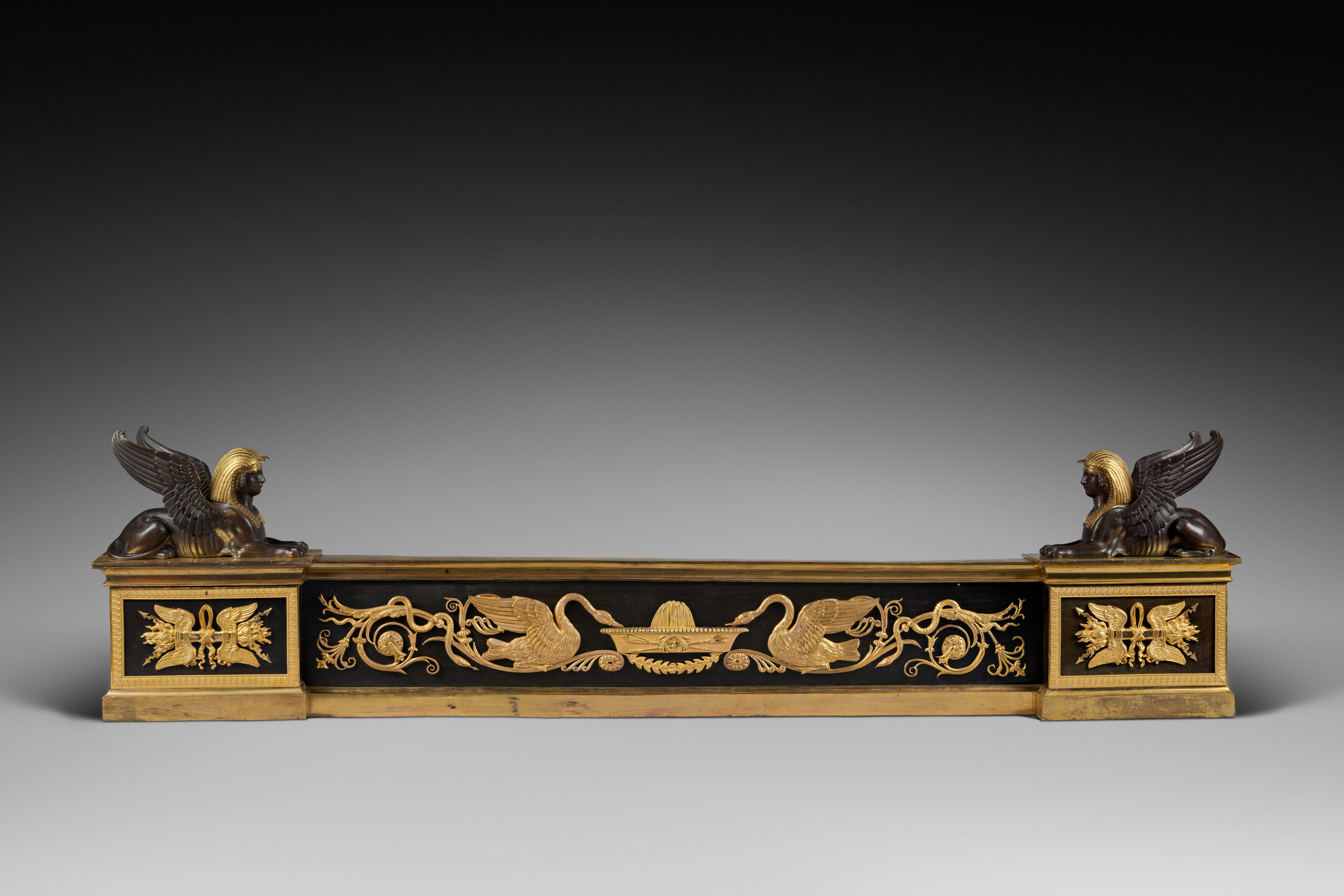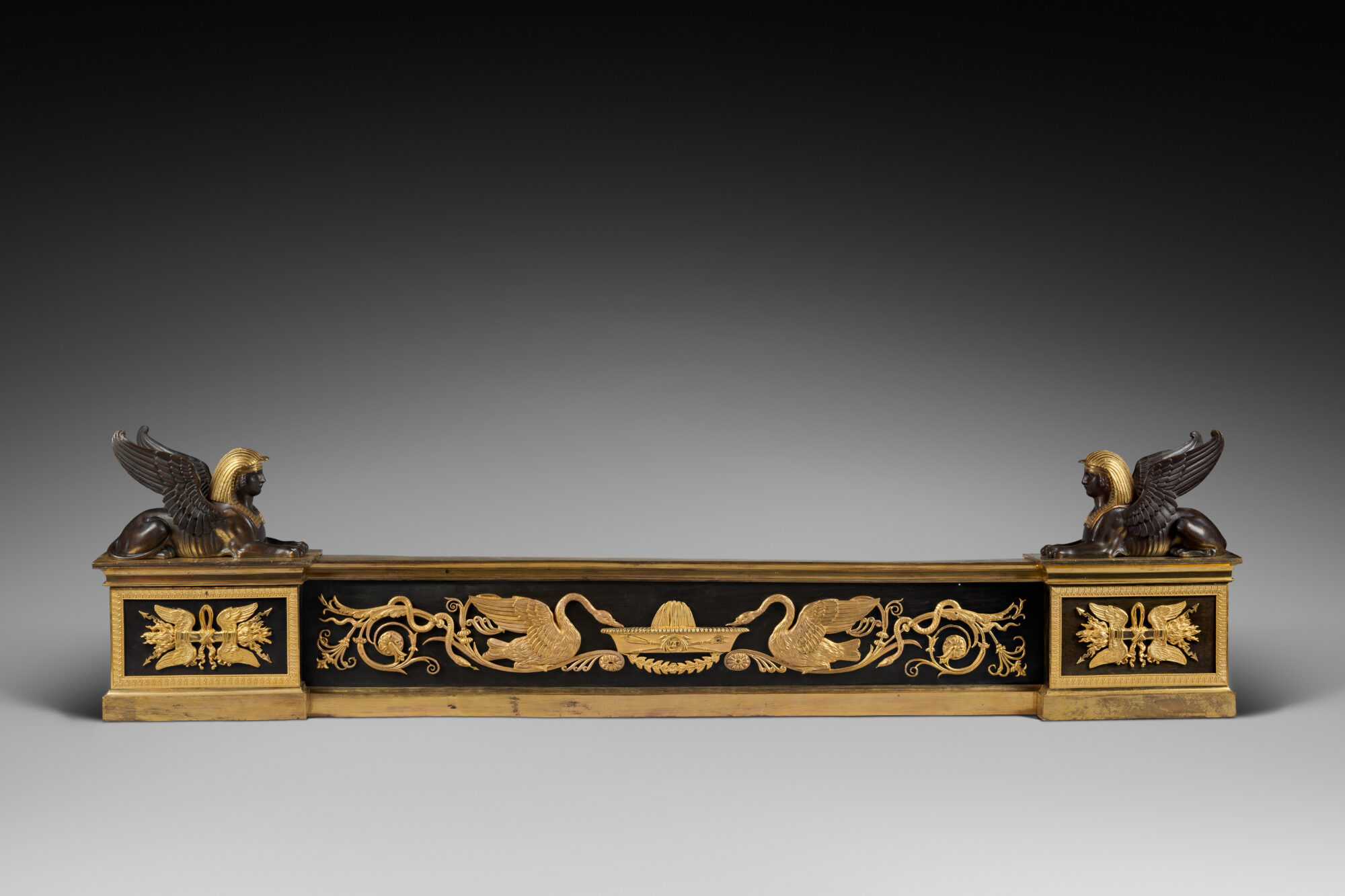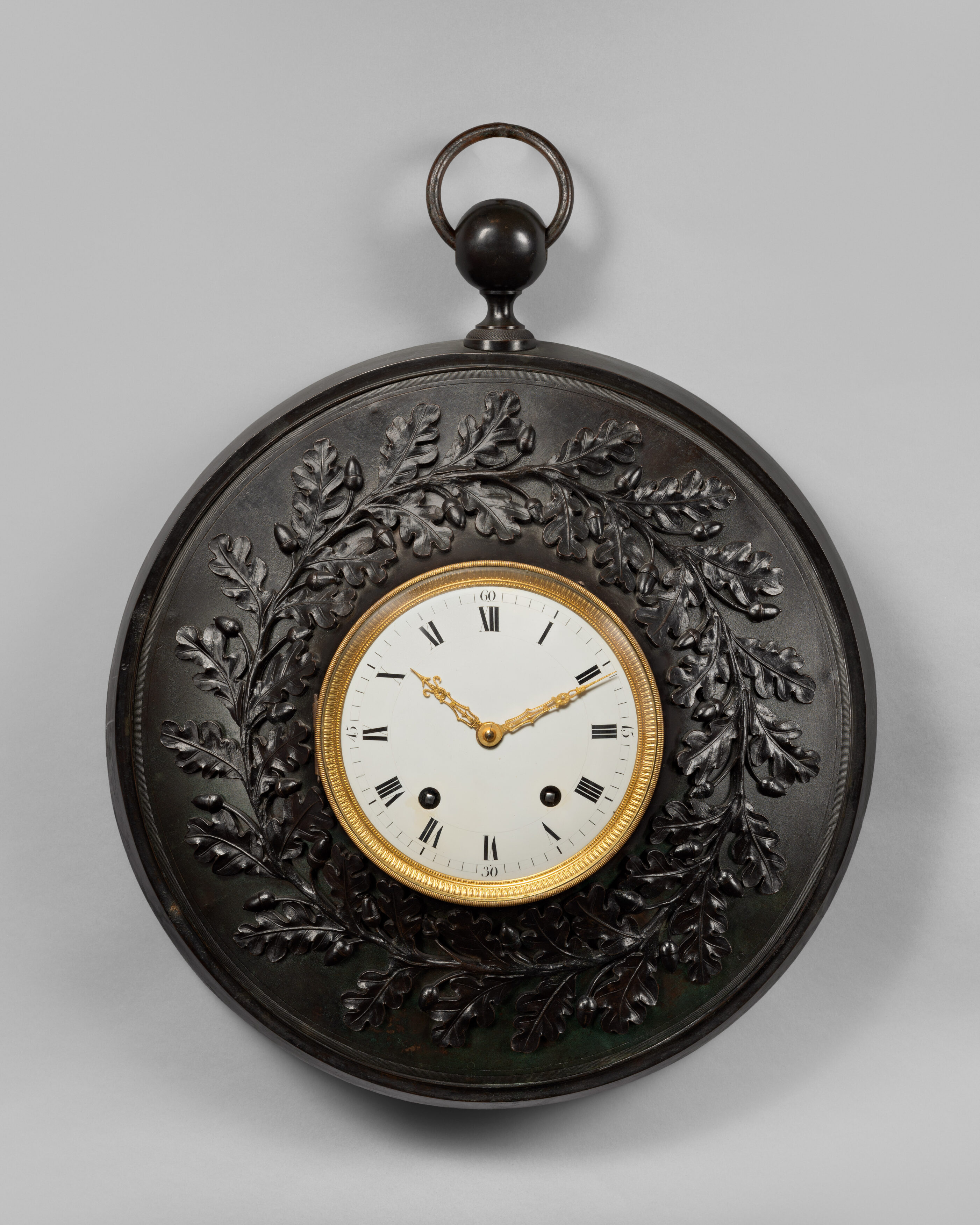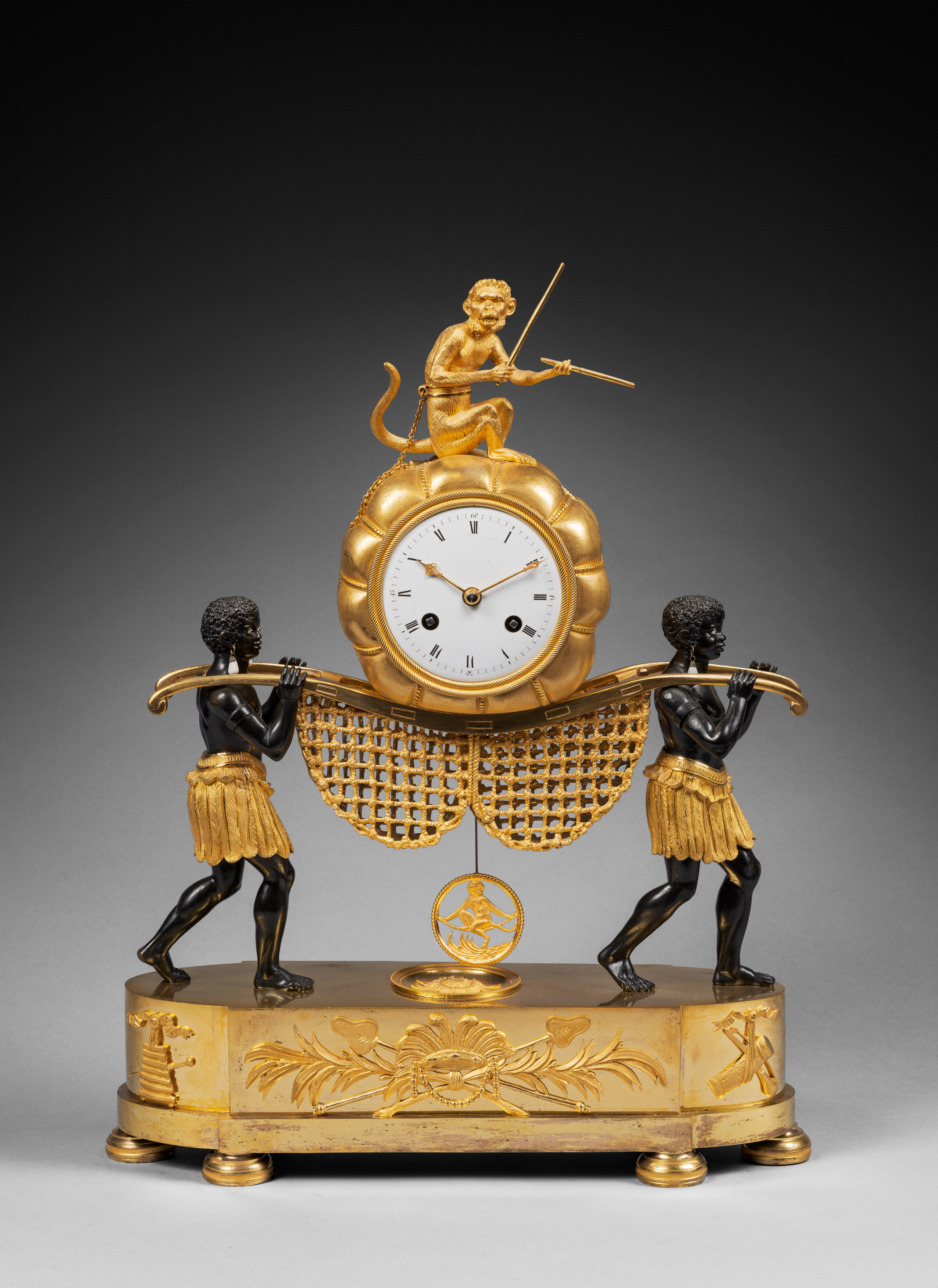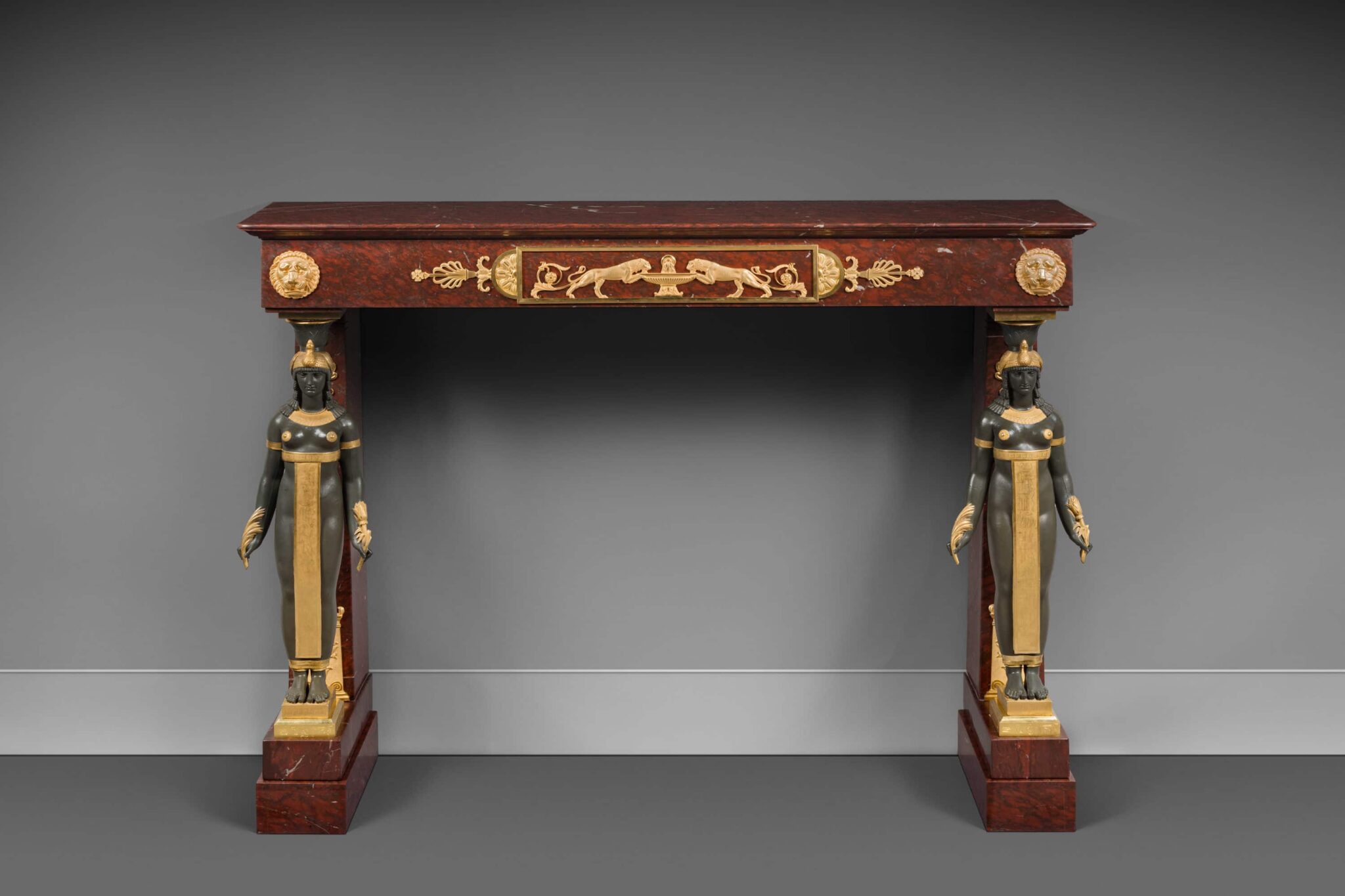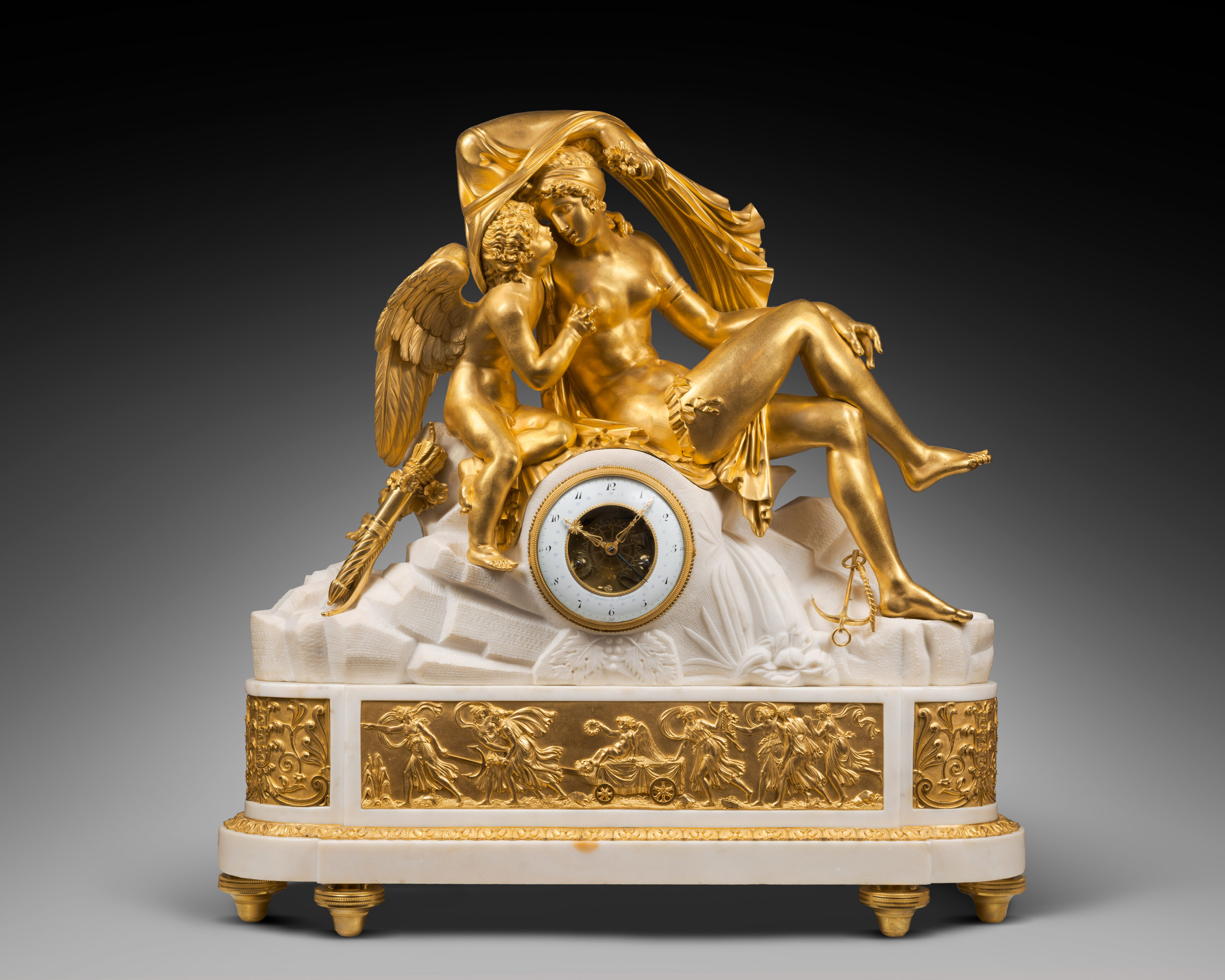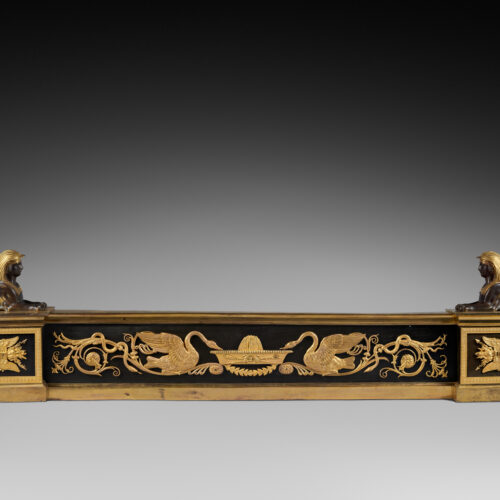A Rare Patinated and Matte Gilt Bronze Fire Fender
« The Sphinxes »

Attributed to the Master bronze Chaser-Caster Pierre-Philippe Thomire
Paris, Empire period, circa 1805-1810
Made of finely chased, engine-turned, patinated and matte gilt bronze, the present fire fender stands out due to its neoclassical, Egyptian-influenced design. It features two projecting lateral pilasters that support magnificent reclining sphinxes wearing nemes headdresses with curling tails and unfurled wings; the façade is adorned with ribbon-tied winged torches adorned with thunderbolts and framed by waterleaf friezes. The panel that links the two lateral elements is decorated with applied motifs featuring floral scrolls with rosettes around which snakes are entwined, supporting two facing swans that are drinking from a fountain that is decorated with a garland below and is adorned with a wreath and a crossed trident and palm leaf.
The importance of heating in the daily lives of the inhabitants of Paris during the Ancien Régime and the Empire period led to the creation of bronze firedogs, which, during the 18th century, were called “feux en deux parties” in French, for they were made up of two elements on which were laid the logs necessary for fire-making. It was not until the late 18th and the early years of the following century that fire fenders came to be used. They were an additional accessory that were employed along with fire dogs. The present rare fire fender was produced within this context. Its Egyptian-inspired motifs include reclining sphinxes, which are also seen on a handful of comparable models that are often attributed to Pierre-Philippe Thomire, the most talented bronze caster of the time. One comparable example was photographed in one of the fireplaces of the Hôtel de la Marine in Paris (illustrated in P. Verlet, Les bronzes dorés français du XVIIIe siècle, Editions Picard, Paris, 1999, p. 311, fig. 343). A second piece, formerly offered on the Paris art market, is pictured in H. Ottomeyer and P. Pröschel, Vergoldete Bronzen, Die Bronzearbeiten des Spätbarock und Klassizismus, Tome I, Munich, 1986, p. 341, fig. 5.4.6. A third is on display in the Malmaison Museum, which was formerly the residence of Empress Josephine (Inv. M.M.40.47.355). One further fire fender, featuring a panel that is adorned with an identical motif depicting swans drinking from a fountain, is in the Mobilier national in Paris (shown in M-F. Dupuy-Baylet, De Bronze et de Cristal, Objets d’ameublement XVIIIe-XIXe siècles du Mobilier national, Dijon, 2020, p. 216-217, catalogue n° 96).
Pierre-Philippe Thomire (1757 - 1843)
Pierre-Philippe Thomire was the most important Parisian bronzier of the last quarter of the 18th century and the first decades of the following century. Early on in his career he worked for Pierre Gouthière, ciseleur-fondeur du roi, and toward the mid-1770’s began working with Louis Prieur. He later became one of the bronziers attached to the Manufacture Royale de Sèvres, creating the bronze mounts for most of the important creations of the day. After the Revolution, he purchased the stock of Martin-Eloi Lignereux, thus becoming the most important suppliers of furniture bronzes for châteaux and Imperial Palaces. In addition, he worked for a wealthy private clientele, both French and foreign, including several of Napoleon’s Marshals. Thomire retired in 1823.
